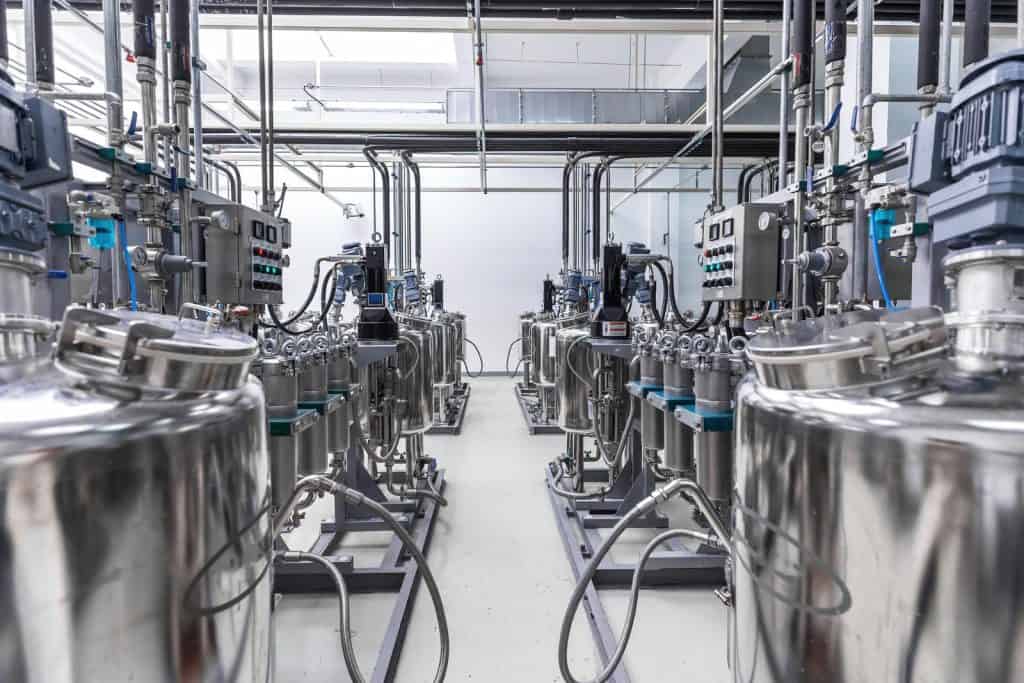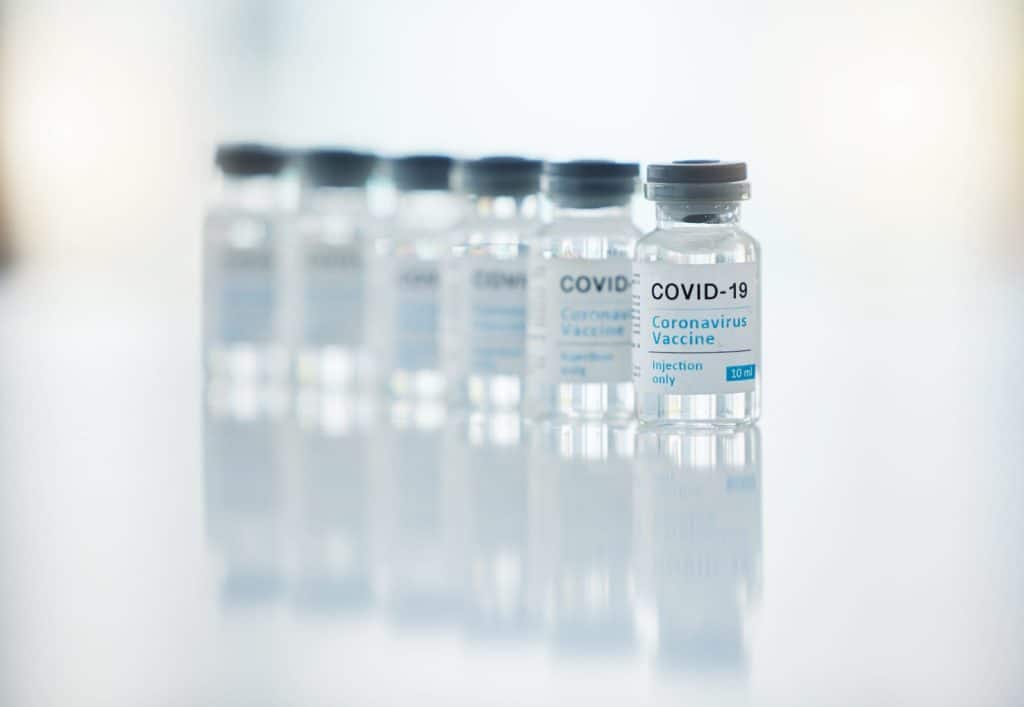Validation is the process of ensuring that a procedure, process, or activity consistently produces the expected results and maintains the desired level of compliance.
In the pharmaceutical and biotech industries, validation is a crucial aspect of quality assurance and regulatory compliance. The field of validation is divided into various subsections, including equipment validation, facilities validation, cleaning validation, process validation, and computer system validation, among others.
Through validation, manufacturers can ensure that their products meet regulatory standards and are safe for patients to use. In this article, we will delve into the different aspects of validation in the pharmaceutical industry, its regulatory requirements, key steps involved in the validation process, challenges and common pitfalls, and its impact on drug development and manufacturing.
Why is Pharmaceutical Validation Important?
Pharmaceutical validation is critical for ensuring product quality, patient safety, and regulatory compliance. It helps to identify and mitigate any potential risks and ensure that the manufacturing process and final product meet the desired specifications.
Without proper validation, there is a risk of producing products that are substandard, ineffective, or even dangerous to patients. Through validation, manufacturers can ensure that their products consistently meet the regulatory requirements, such as Good Manufacturing Practices (GMP), set by governing bodies like the FDA. Moreover, validation ensures that the manufacturing process is optimized and reduces the likelihood of costly recalls or rejections of products.
Therefore, the importance of pharmaceutical validation cannot be overstated, and it is essential for manufacturers to perform this process at various stages of drug development and manufacturing to ensure the safety and efficacy of their products.

Types of Pharmaceutical Validation
The field of pharmaceutical validation is divided into several subcategories, each of which serves a unique purpose in ensuring the quality and safety of pharmaceutical products. The following are some of the most common types of pharmaceutical validation:
Equipment Validation
This type of validation involves confirming that the equipment used in manufacturing processes is suitable for its intended use and meets the desired specifications. Equipment validation typically includes design qualification, installation qualification, operational qualification, and performance qualification.
Facilities Validation
Facilities validation involves the assessment of the facilities in which pharmaceutical products are manufactured to ensure that they are suitable for their intended use. This type of validation includes site acceptance testing, the validation of environmental monitoring systems and procedures, and utility qualification.
Cleaning Validation
Cleaning validation is the process of verifying that the equipment used in production is adequately cleaned between batches to prevent cross-contamination. This type of validation aims to ensure that the cleaning process is effective at removing any residues, including those that may be hazardous to patients.
Process Validation
Process validation confirms that the manufacturing process consistently produces products that meet the desired specifications. This type of validation involves establishing and qualifying critical process parameters that must be controlled during the manufacturing process.
Analytical Method Validation
Analytical method validation verifies that the analytical methods used to test pharmaceutical products are accurate, specific, and reliable. This type of validation ensures that the results obtained from these methods are valid and can be used to make decisions regarding the quality of pharmaceutical products.
Computer System Validation
This type of validation focuses on the validation of computer software and hardware used in manufacturing processes. It includes the testing and qualification of computerized systems, databases, and software applications to ensure their reliability and accuracy.
Each of these types of validation serves a critical purpose in ensuring the quality and compliance of pharmaceutical products, and manufacturers must understand and perform them properly to ensure the safety and efficacy of their products.
Qualification vs. Validation in Pharmaceuticals
Though the terms qualification and validation are often used interchangeably in the pharmaceutical industry, there are distinct differences between them.
Qualification is the process of proving that equipment and systems are suitable for their intended use. It has four main stages:
- Design qualification (DQ) involves verifying that the design of the equipment or system meets the functional and operational requirements.
- Installation qualification (IQ) verifies that the equipment or system is installed and tested correctly according to the manufacturer’s specifications and the design qualification.
- Operational qualification (OQ) involves testing the equipment or system as it operates under normal conditions to ensure it performs as expected.
- Performance qualification (PQ) verifies that the system or equipment consistently meets the desired specifications.
Validation, on the other hand, is the process of proving that a process or system is capable of producing the desired results consistently. Through validation, manufacturers ensure that the final product meets the regulatory requirements and is safe for patients to use. Validation is achieved through the following steps:
- Establishing performance criteria to determine what results the process or system should achieve.
- Qualifying equipment and systems, ensuring they are functioning as intended.
- Testing the process to ensure that it can achieve the established performance criteria.
- Continuously monitoring the process to ensure that it consistently meets the performance criteria.
In conclusion, qualification and validation are complementary processes that are critical to ensuring the quality and safety of pharmaceutical products. By following these processes, manufacturers can ensure that their equipment, systems, and processes are suitable for their intended use and consistently produce high-quality products that meet regulatory requirements.

Regulatory Requirements for Pharmaceutical Validation
Pharmaceutical validation is a mandatory requirement for complying with regulatory standards set forth by governing bodies, such as the Food and Drug Administration (FDA). The FDA’s Current Good Manufacturing Practices (cGMPs) require manufacturers to validate their processes and ensure that they meet predefined specifications.
The FDA’s requirements for pharmaceutical validation fall into four main categories:
- Process Validation: This category covers the validation of manufacturing processes and product specifications. Applicants must validate the manufacturing process and related controls, monitor process performance, and establish specifications for the products quality attributes.
- Cleaning Validation: This category covers residue testing, sampling, testing, and acceptance criteria for cleaning methods that are used to prevent contamination of drug products from prior products and other potential sources.
- Analytical Method Validation: This category covers the validation of methods used to analytically test drug products and drug substances. Applicants must provide descriptive data on characteristics of method, demonstrate method precision, accuracy, specificity, limit of detection and quantization, linearity, range, and robustness.
- Computer System Validation: This category covers the validation of computer systems used in drug operations, such as those used to control the manufacturing process and laboratory data acquisition and processing. Manufacturers must validate that these systems are controlled, protected, and backed up to ensure the accuracy, reliability, and authenticity of data.
The regulatory requirements for pharmaceutical validation apply to both new drugs and marketed drugs and encompass a significant portion of the drug development and manufacturing processes. Compliance with these requirements is essential to ensure that pharmaceutical products are safe and effective for their intended use.
Key Steps Involved in the Validation Process
Pharmaceutical validation is a complex process that requires significant attention to detail and strict adherence to regulatory requirements. The following are the critical steps involved in the validation process:
1. Plan the Validation Process
The planning stage involves defining the scope and establishing the objectives of the validation process. This stage also involves determining the resources and timeline required to carry out the validation activities.
2. Define User Requirements
This stage involves identifying the user requirements that the equipment, system, or process must meet. It involves gathering information about the product, the process, and the production requirements.
3. Develop Validation Protocols
The development of validation protocols involves defining the testing procedures, acceptance criteria, and testing methods. Validation protocols define the methods to be used to test the equipment, system, or process, and they outline acceptance criteria to be followed.
4. Execute Validation Protocols
The execution stage involves performing the defined protocols and ensuring that the results meet the defined acceptance criteria. Any deviations from the acceptance criteria should be addressed and resolved.
5. Report the Results
The results should be documented in a validation report that includes a summary of the validation activities, identified deviations, and any corrective actions taken. The report should also outline the acceptance criteria met and any areas that need improvement.
6. Implement Validation Maintenance
Once completed, the validation process must be maintained to ensure that the equipment, system, or process continues to meet the defined acceptance criteria. The maintenance may include monitoring equipment performance, tracking system downtime, and performing regular validation reviews.
In summary, the validation process is a crucial component of pharmaceutical product development and manufacturing. Following these key steps helps to ensure that the equipment, system, or process continues to consistently meet regulatory requirements and produce high-quality pharmaceutical products.
Frequently Asked Questions
What is pharmaceutical validation?
Pharmaceutical validation is the process of establishing documented evidence that a procedure, process, or activity, such as manufacturing, testing, and packaging, consistently results in products meeting predetermined quality standards. Pharmaceutical validation is a mandatory requirement for compliance with regulatory standards.
Why is pharmaceutical validation important?
Pharmaceutical validation is important for ensuring product quality, patient safety, and regulatory compliance. It helps to identify and mitigate risks in the manufacturing process, ensures consistency in product quality, and ensures compliance with regulatory standards such as GMP.
What are the different types of pharmaceutical validation?
The main types of pharmaceutical validation include equipment validation, facilities validation, cleaning validation, process validation, analytical method validation, and computer system validation.
What is the difference between qualification and validation in pharmaceuticals?
Qualification is the process of ensuring that the equipment and systems used in the manufacturing process are suitable for their intended use. Validation, on the other hand, is the process of ensuring that the manufacturing process produces products meeting predetermined quality standards consistently.
What are the regulatory requirements for pharmaceutical validation?
Regulatory requirements for pharmaceutical validation vary by country and governing bodies. In the US, the FDA’s Current Good Manufacturing Practices (cGMPs) require manufacturers to validate their processes and ensure they meet predefined specifications.
How is pharmaceutical validation performed?
Pharmaceutical validation involves several critical steps such as planning the validation process, defining user requirements, developing validation protocols, executing validation protocols, and reporting the results.
What are the acceptance criteria for pharmaceutical validation?
Acceptance criteria for pharmaceutical validation are the predetermined standards that must be met for the validation to be deemed successful. They typically include quantitative and qualitative measures that must be demonstrated for the equipment, system, or process to be considered acceptable.
How is process validation different from analytical method validation?
Process validation involves ensuring that the manufacturing process consistently produces products that meet the predetermined quality standards, while analytical method validation verifies that the analytical methods used to test pharmaceutical products are accurate, specific, and reliable.
What are the challenges and common pitfalls in pharmaceutical validation?
Challenges and common pitfalls in pharmaceutical validation can include the lack of clarity in regulatory requirements, incomplete product information, insufficient time, and inadequate resources.
How often should pharmaceutical validation be performed?
Pharmaceutical validation should be performed throughout the life cycle of the product, from development to manufacturing and distribution. The frequency of validation depends on the equipment, system, or process in question.
What documentation is required for pharmaceutical validation?
Documentation required for pharmaceutical validation typically includes protocols, reports, and procedures that outline the validation process used to ensure that predetermined quality standards are met.
How can risk assessment be incorporated into pharmaceutical validation?
Risk assessment helps identify potential risks and establish controls in the manufacturing process. It is important to incorporate risk assessment into pharmaceutical validation to identify potential risks, develop mitigation strategies, and ensure that products are safe and effective.
What is the role of quality assurance in pharmaceutical validation?
Quality assurance plays a critical role in ensuring that pharmaceutical validation processes are followed correctly and that products meet quality standards. It oversees the validation process, audits the documentation and procedures, and provides guidance on corrective actions where necessary.
How does pharmaceutical validation impact drug development and manufacturing?
Pharmaceutical validation ensures that manufacturing processes and products meet regulatory requirements and industry standards. The validation process plays a critical role in drug development and manufacturing, ensuring that the final product is safe and effective.
Can you provide examples of common validation protocols used in the pharmaceutical industry?
Common validation protocols used in the Pharmaceutical industry include Design Qualification (DQ), Installation Qualification (IQ), Operational Qualification (OQ), Performance Qualification (PQ), cleaning validation, and analytical method validation.
What is the relationship between pharmaceutical validation and Good Manufacturing Practices (GMP)?
Good Manufacturing Practices (GMP) are regulatory standards that pharmaceutical manufacturers must follow to ensure their products are safe, effective, and of high quality. Pharmaceutical validation is a mandatory requirement for compliance with regulatory standards such as GMP.
Conclusion
In conclusion, pharmaceutical validation is critical for ensuring product quality, patient safety, and regulatory compliance. The process involves establishing documented evidence that the manufacturing processes, equipment, systems, and analytical methods used in developing and manufacturing pharmaceutical products consistently meet predetermined quality standards.
Validation is mandatory for regulatory compliance, and it is divided into distinct categories such as equipment validation, facilities validation, cleaning validation, process validation, and analytical method validation.
Through validation, manufacturers can optimize their manufacturing processes, prevent costly recalls and rejections of pharmaceutical products, and ensure that their products are safe and effective for patient use.
By adhering to the validation process and regulatory requirements set by governing bodies like the FDA, manufacturers can provide high-quality pharmaceutical products that meet regulatory requirements and ensure patient safety.
